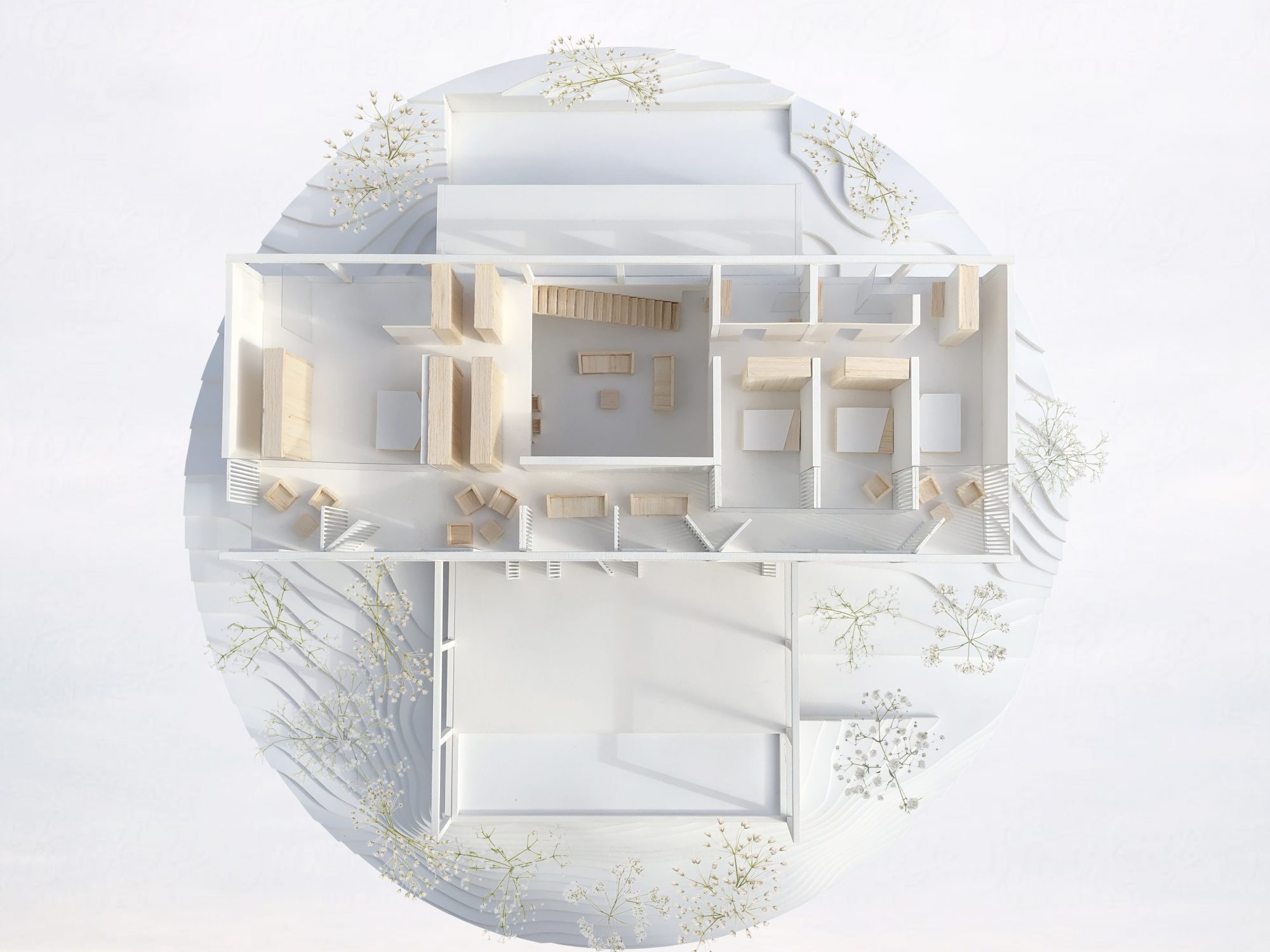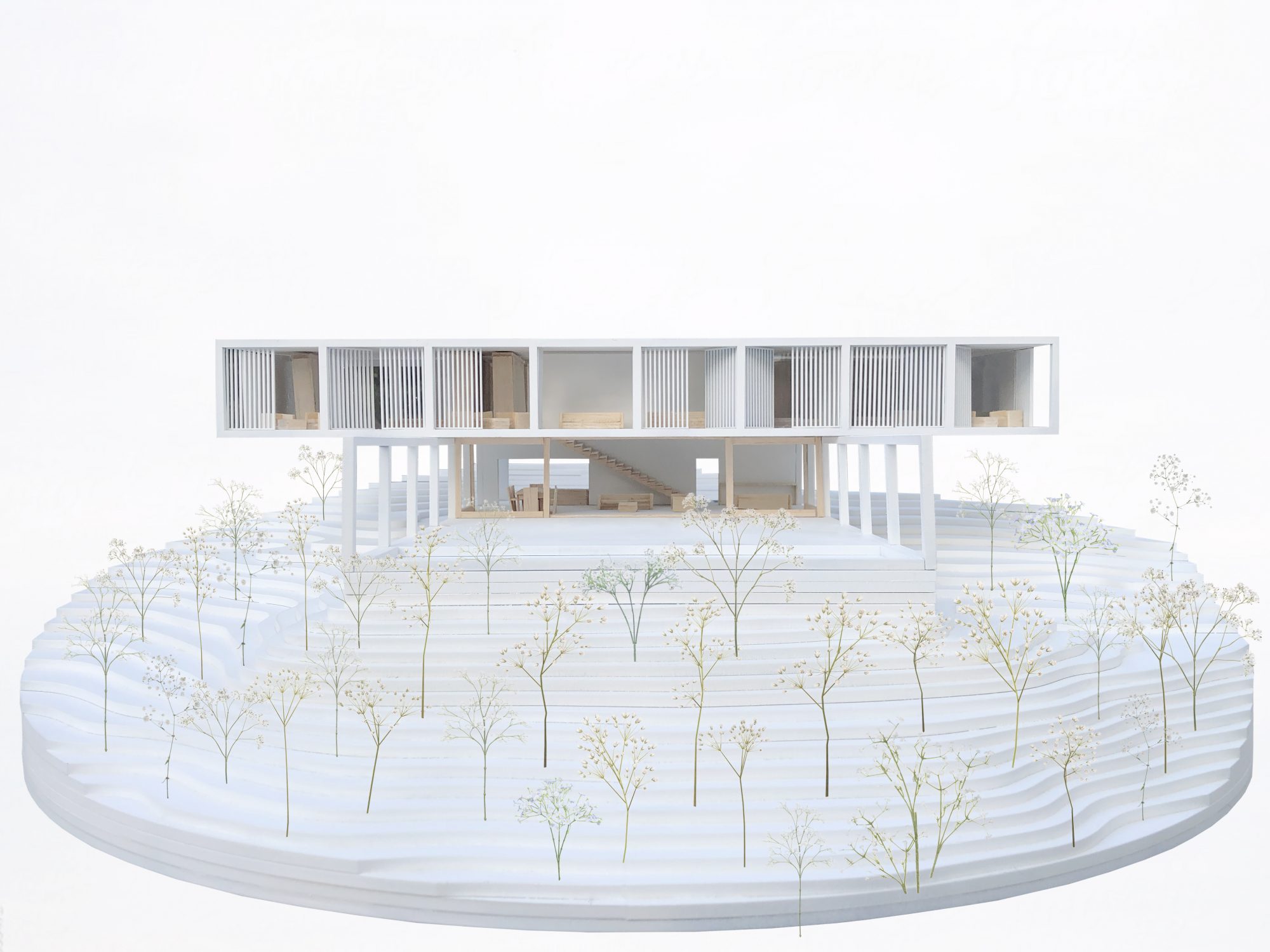Playa de los Alemanes “The German’s Beach” is a natural untouched oasis in the middle of the very crowded and touristic coast of Cadiz, in the south of Spain. Characterized by its dunes, native mediterranean vegetation, golden sand and crystalline water, it lays down the foot of a prominent hill, a rough topography displaying low vegetation, big rocks and boulders. Very few constructions are scattered in the surroundings, maintaining the wild atmosphere of the area. The Rocamar House negotiates with the site condition, minimizing the transformation of the ground, adapting to the slope and to the existing boulders and diminishing the visual impact of the construction in the area. The structure mediates between the wild and the domestic, the natural topography and the new datums that relate with the ground and the view of the sea. Four equal concrete vierendeel trusses are stacked generating three different levels. The lower pair of trusses negotiate with the ground, the upper one is arranged perpendicularly on top of the lower one, cantilevering both sides and creating an elevated hermetic box in dialogue with the distant view of the beach and the coast.
The two distinctive set of structures define three different datums. The bottom set of trusses uses the existing rocks to lightly touch the ground, bridging a large span in order to generate an exterior but protected area underneath the construction for service rooms and parking space. This volume creates a podium that houses the swimming pool overlooking the sea and an extensive terrace facing west that captures the last light of the day before the sun disappears behind the ocean. The upper set of trusses rests on top of the lower one generating a double height space in the intersection created by the four structural elements. The living room and an open kitchen inhabit this space in continuity with the exterior area, extending visually the interior incorporating the view and reflection of the sea and the distant landscape. The upper volume contains the most private spaces of the house, the main bedroom and its in-suite bathroom, three guest rooms, and secondary bathrooms. This floating box is also fully open to the views and the western light. An exterior gallery defines the main facade of the house, extending the private rooms with terraces that are connected, an extra space that operates as a device to capture the view, a lens that transforms and augments its perception.
The Rocamar House is a platform resting subtly on the topography that serves as a stage to witness the power of nature, but it is also a floating concrete structure that hovers over the distant view of the ocean and capture the mediterranean landscape.








